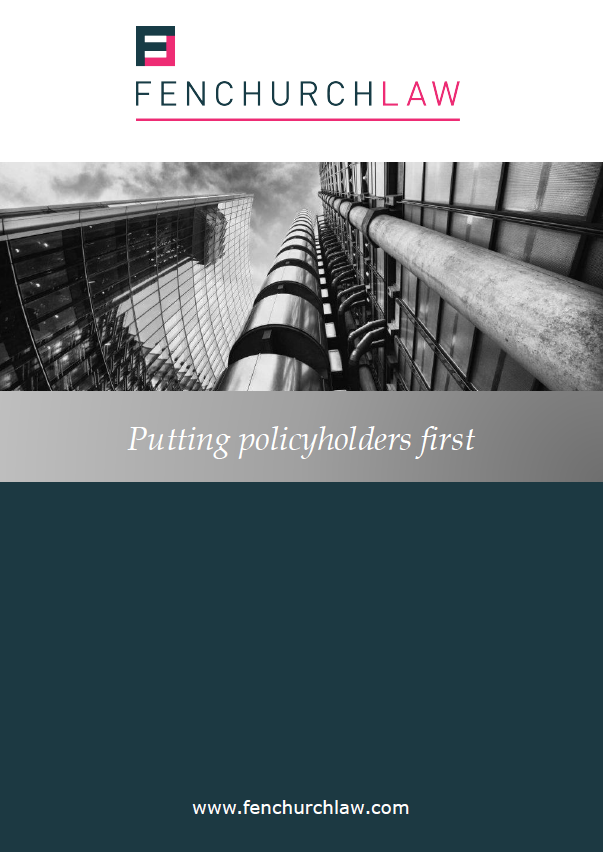
Condonation and Aggregation – Decision by the Court of Appeal in Axis Specialty Europe S.E v Discovery Land [2024] EWCA Civ 7
This is the first Court of Appeal decision as to the meaning of “condoning” dishonest acts under the SRA Minimum Terms. As a reminder, solicitors’ professional indemnity policies must comply with the Minimum Terms. Under those terms insurers can decline to cover a claim which arises from dishonesty only if it had been committed or condoned by all partners in the firm.
The dispute concerned two fraudulent acts perpetrated against the claimants by their solicitor, Mr Stephen Jones, who was the senior partner in a two-partner firm. The other partner was a Mr Prentice. The firm became insolvent, and the claimants pursued two claims against the firm’s insurers, Axis, pursuant to the Third Parties (Rights against Insurers) Act 2010.
AXIS denied cover on the basis that the second partner, Mr Prentice, had condoned Mr Jones’ dishonesty (through “blind eye” knowledge), therefore engaging the exclusion considered below. While the Trial Judge found that Mr Prentice’s standards fell well below those required in his profession, he nevertheless concluded that Mr Prentice had not condoned the relevant fraudulent acts. Consequently, the claimants were entitled to be indemnified.
The appeal concerned Axis’ challenge to (1) the Judge’s finding of fact that Mr Prentice had not condoned Mr Jones’ dishonest behaviour and (2) the Judge’s decision that Axis was not entitled to rely on the aggregation clause.
Condonation
The exclusion in Axis’ policy was in the following terms:
“EXCLUSIONS
The insurer shall have no liability for: …
2.8 FRAUD OR DISHONESTY
Any claims directly or indirectly out of or in any way involving dishonest or fraudulent acts, errors or omissions committed or condoned by the insured, provided that:
a) the policy shall nonetheless cover the civil liability of any innocent insured; and
b) no dishonest or fraudulent act, error or omission shall be imputed to a body corporate unless it was committed or condoned by, in the case of a company, all directors of the company or in the case of a Limited Liability Partnership, all members of that Limited Liability Partnership.”
There was an argument as to what clause 2.8 requires to be “condoned”. The Court of Appeal agreed with the Trial Judge that the clause is wide enough to include condonation of a pattern of dishonest behaviour of the same type as that which gives rise to the claim. As a result, the question would be “whether or not knowledge and acceptance or approval of other acts in the same pattern amount to condonation of the act or acts which gave rise to the claim.”
For example, where partner B condoned the regular use of client funds by partner A for his/her own purpose, the Court of Appeal considered it would be more difficult for partner B to argue that he was unaware of “the specific instances of such behaviour which gave rise to the claim.”
In this case, the Court of Appeal acknowledged that, while the Trial Judge found that Mr Prentice’s evidence contained both truth and untruth, his evaluation of the evidence and ultimate decision was entirely “rational” and one he was entitled to reach.
Aggregation
The Court of Appeal had to consider whether the two claims arose from “similar acts or omissions in a series of related matters or transactions.” To do so, it applied the test for aggregation considered by the Supreme Court in AIG v Woodman.
Teare J (at first instance) found that the degree of similarity must be “real or substantial.” As to whether the claims were “related”, Lord Toulson found that this required that they “fitted together.” In considering this, the Court of Appeal in Discovery Land commented that assessing “a real or substantial” similarity requires a careful consideration of the “substance of each claim.”
Here, whilst the same property was involved and the victims were affiliated companies, the Court of Appeal considered these factors to be “insufficient to provide the necessary link between the two transactions.” The Judge’s decision not to aggregate the claims was upheld.
In determining both issues, the Court of Appeal commented that a thorough factual analysis of the evidence was required, which is what it accepted the Trial Judge had indeed carried out in “painstaking” detail. While each case turns on its own facts, this decision provides a helpful guide at Appellate level as to how a court should approach issues of condonation and aggregation.
Authors
Other news
The unattractive reality of the King Trader Decision – a botched appeal
18 November 2025
The Court of Appeal has handed down its judgment in MS Amlin v King Trader. The case stems from the 2019 grounding of…



